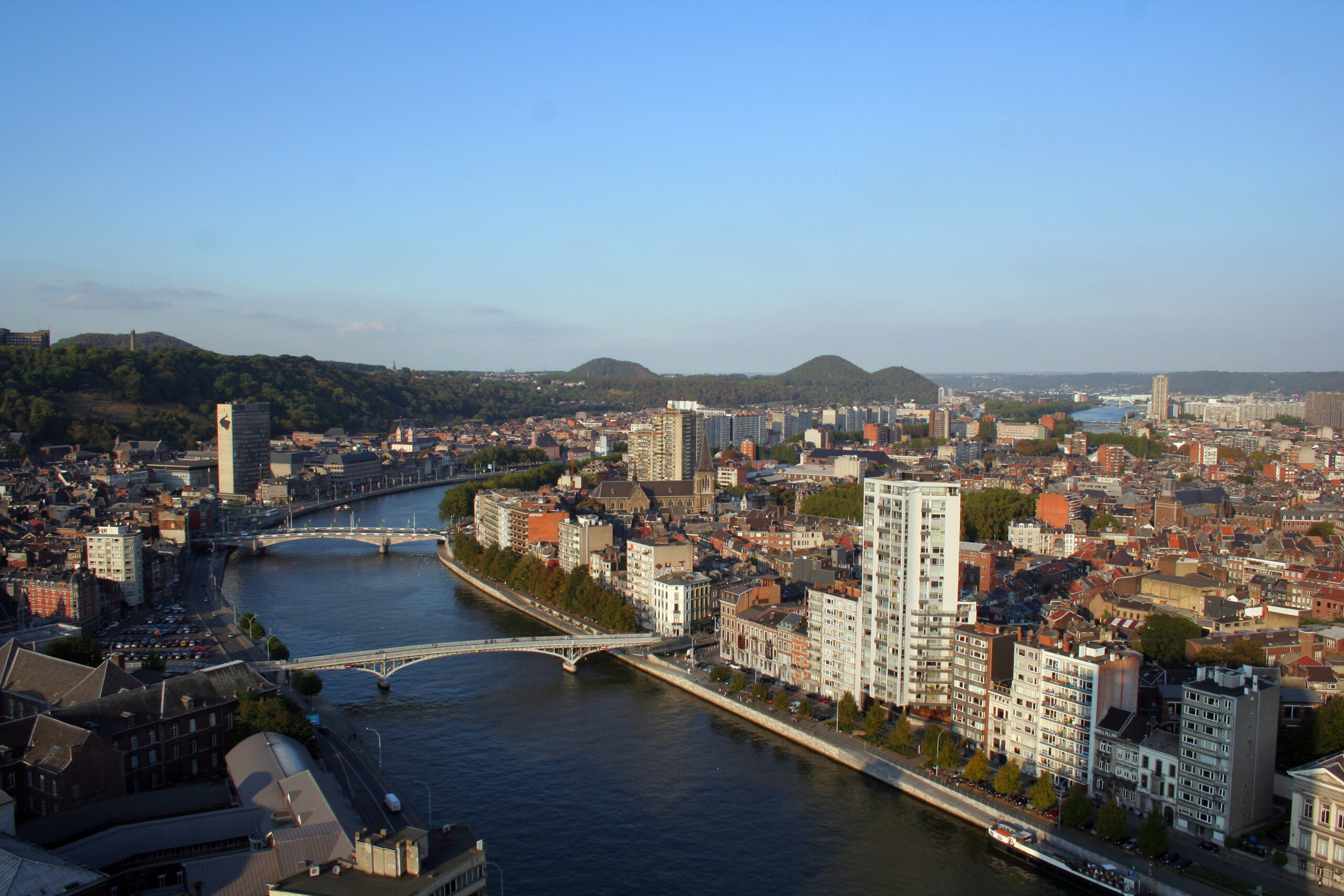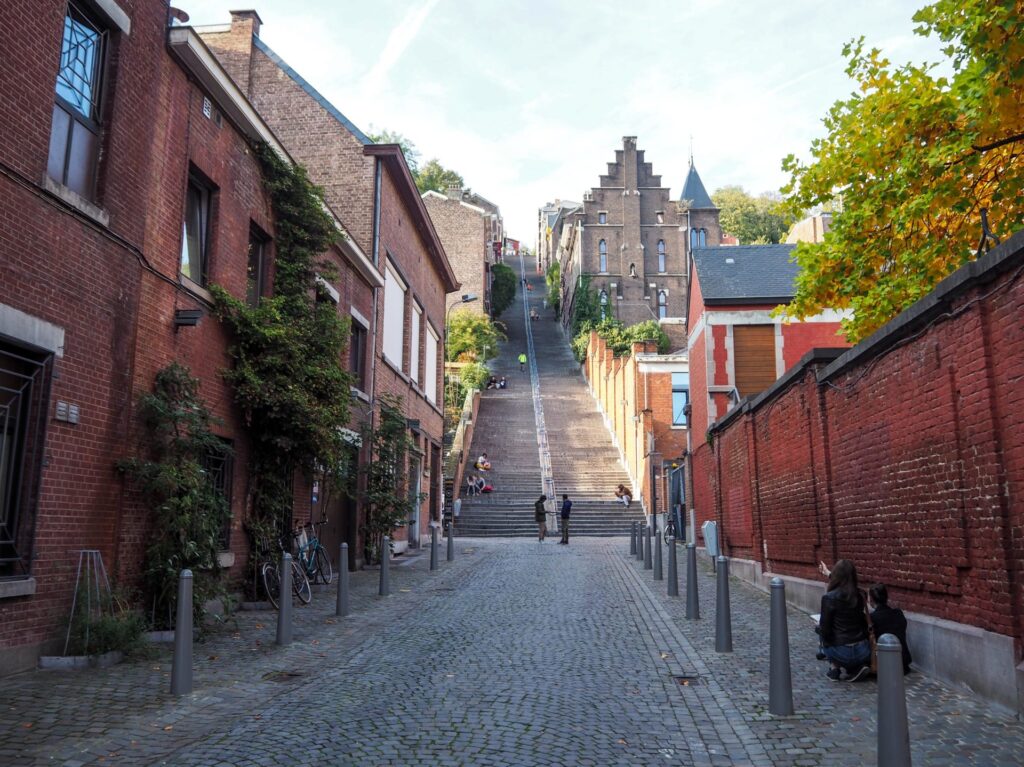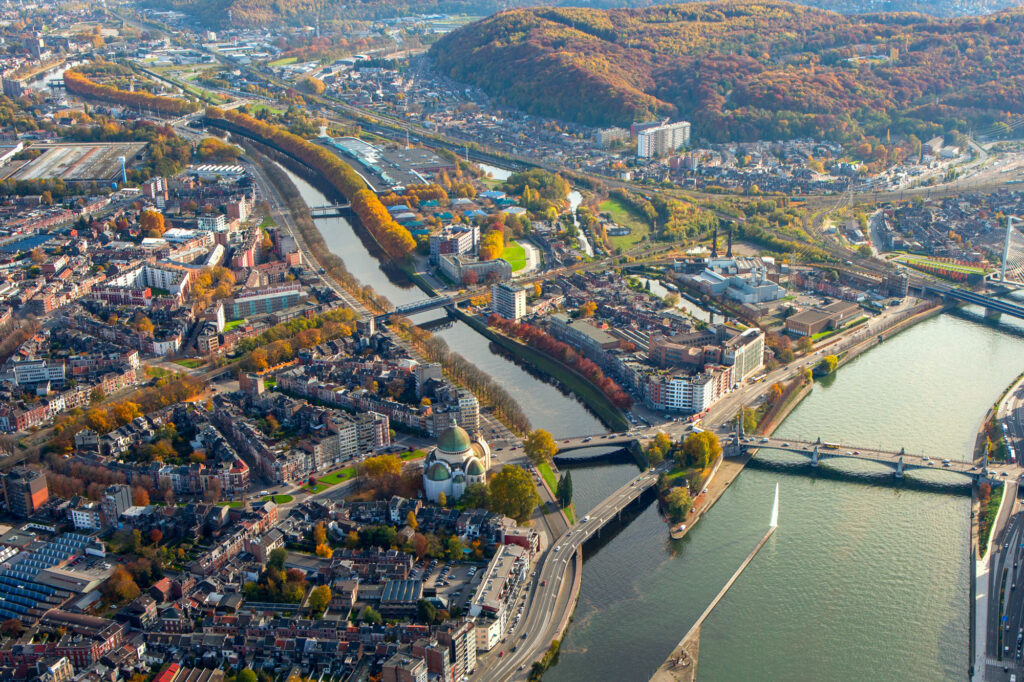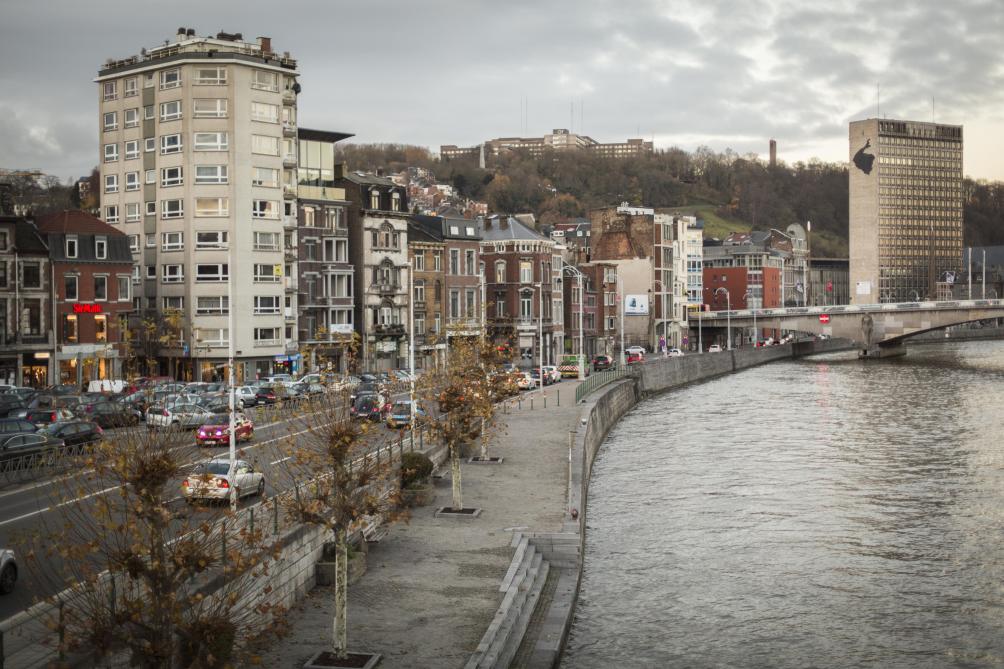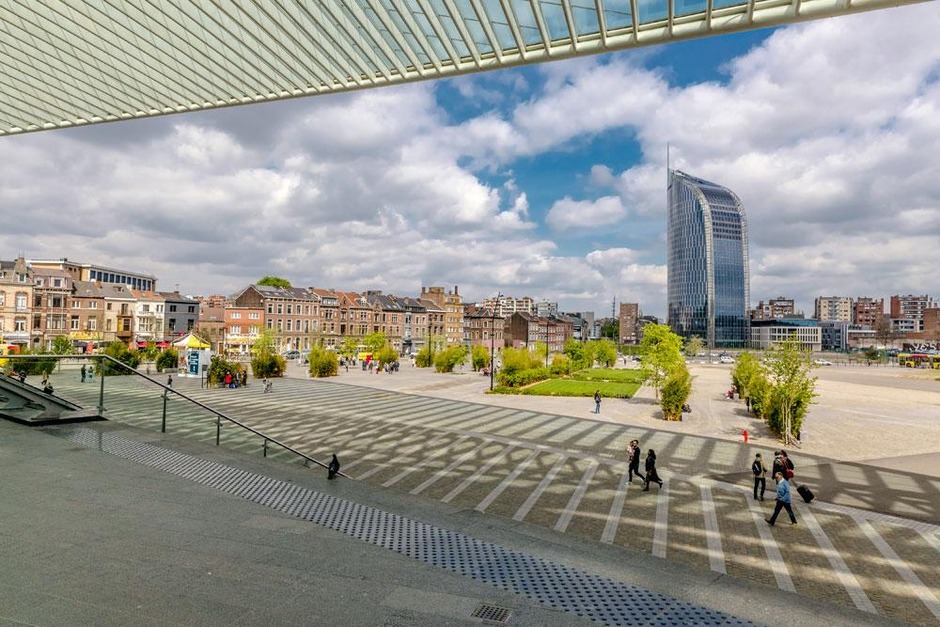Liège is a major Wallooncity and municipality and the capital of the Belgian province of Liège. The central area of Liège is rather an interesting combination of a historic neighbourhoods (dotted with a few extremely brutalist buildings from the 1960s and 70s), rather elegant 19th century ones with wide boulevards, tall apartment buildings (including Art Deco ones), the Meuse river and a few pretty parks. The outskirts of Liège can be divided into three distinct areas: large, sprawling industrial complexes on the river’s bank around Herstal in the north and Seraing in the south, working class areas to the east of the river, and leafy neighbourhoods on the hills to the west and south-east. Liège has a dramatic natural setting at the meeting point of the Ardennes, Condroz, Land of Herve and Hesbaye regions. Part of Liège University is located at Sart-Tilman, which lies on a forested hill on the edge of the latter. The Ourthe flow into the Meuse in Liège, while the Vesdre flows into the former in the neighbourhood of Chênée.
| Country | Belgium |
|---|---|
| Community | French Community |
| Region | Wallonia |
| Province | Liège |
| Arrondissement | Liège |
| Government | |
| • Mayor | Willy Demeyer (PS) |
| • Governing party/ies | PS – cdH |
| Area | |
| • Total | 69.39 km2 (26.79 sq mi) |
| Population (2018-01-01) | |
| • Total | 197,355 |
| • Density | 2,800/km2 (7,400/sq mi) |
Liège might not be the typical tourist destination, but many will be surprised to find a city with a special character and friendly, open inhabitants who enjoy their lives there.
Sights
Museums
- The Aquarium which is housed in the same neo-classical building as the Maison de la Science and Zoological institute is the most visited museum in Wallonia, as well as one of the cheapest places in Europe to see a man-eating shark!
- Archéoforum- an archeological site showcasing the remains of the three (successive) cathedrals that stood on the site, as well as those of a building from Roman times.
- BAL (Beaux-arts Liège, formerly ´Museum of Walloon Art´). Housed in an ugly 1970´s building that disrupts the streetscape of the Hors-Château area, this museum notheless houses both an interesting permenent collection of art from various periouds as well as exhibitions.
- Cité des Miroirs – a recently renovated art-deco swimming pool that host exhibitions on photography.
- The Curtius Palace. This imposing 8-story building from the start of the 17th century was the store of a rich arms merchant. The nearby Hôtel de Hayme de Bomal (quai de Maestricht 8 and rue Feronstrée 122) was an official building under French rule and twice welcomed Napoleon. These two buildings and several other historic buildings provide the backdrop for the Museum Grand Curtius with its art and history collections.
- The Hôtel d’Ansembourg is now a museum, and can be recommended for its well-preserved interiour.
- Musée Grétry
- The Museum of Religious Art (rue Mère Dieu 1) will be integrated into the future Museum Grand Curtius, but can now be visited separately.
- Museum of Tchantchès – dedicated to the city’s mascot, who is also the main character in local puppet theaters.
- The Public Transport Museum is located in the Vennes area
- The Museum of Walloon Life is an ethnological mueseum hosted in an old convent.
Cityscape and architecture
Though too messy for the tastes of some people in neighbouring countries, Liège offers a fascinating mix of buildings to people who are passionate about all styles of pre-war architecture. For as well as the industrial wastelands, motorways and occasional brutalist monstrosity that gave it its bad name, the city’s long history of both ecclesiastical and industrial power have left it with an an impressive heritage that encompasses medieval and Victorian architecture, art-nouveau, art-deco, early modernism and everything in between.
As it is located in the steep-sided valley of the Meuse, Liège is also home to numerous stairways – that often lead to spectacular views.
Center and adjacent areas
The city center can be roughly divided into two halves, with Place Saint-Lambert and Rue Léopold between the two:
Hors-Château
The northern part of the center – which goes by the name of Hors-Château – is the best preserved, and contains numerous listed buildings as well many of its main sights:
- Whoever thought the Montmartre or the Potemkin steps were impressive should see Liège’s Montagne de Bueren, the 373 step stairway that leads up to a magnificent view of Liège from the Citadel!
- The area around Rue Hors Château and En Feronstrée are worth visiting for the many beautiful examples of the regional ‘Mosan’-style architecture, that date back to medieval times. Examples include:
- The Couvent des Carmes (1654) on Rue Hors-Château.
- The recently renovated Church of Saint Barthélémy – which was built at the end of the 11th century, as the last of seven “collégiales liégeoises” – hosts the font of a local parish church, that can be considered a masterpiece of medieval goldsmithery. It is located between Rue Hors-Château and En Ferenstrée
- Cour Saint Antoine – a courtyard between Rue Hors-Château and En Feronstrée – is worth a visit for its tasteful contemporary Mosan architecture (1980’s) by Liège architect Charles Vanderhove.
- The Impasses – a series of picturesque alleyways off Rue Hors-Château, with a view on the green slopes of the hill of the citadel.
- Pierreuse – A small area of steep, medieval streets behind Liège-Palais station (Rue Pierreuse, Rue Volière, Fond Saint Servais and Au Péry) that lead up to the citadel. The 16th century Chapel of Saint-Roche on Rue Volière is magnificent, but sadly only open on heritage days. The equally picturesque Church of Saint-Servais lies just a few doors down from Saint-Roche.
- The beautiful hillside gardens of the Cotteaux can be reached from Rue Pierreuse in the daytime, but are closed at night. The hillside between Rue Saint-Walburghe and Rue de Campine – which can be accessed from the top of Rue de Campine, a short walk from the top of Rue Pierreuse, or from a stairway halfway up Rue Saint-Walburge – is a pleasant piece of nature with a nice view of Saint-Martin’s Basilica.
Place du Marché and Place Saint-Lambert
The southern end of Hors-Château is marked by Place du Marché, a square lined with cafe’s, 15th century houses and the elegant town hall.The ‘salle des pas perdus’ (room of lost steps) is open to visitors, though the rest of the town hall – which was destroyed by the French in 1691 and rebuilt in 1714 – is usually closed. The Perron – the monumental fountain that is the symbol of the city’s freedom – stands in the middle of the square.
Place Saint Lambert – which is adjacent to Place du Marché, and at the front of Liège-Saint-Lambert station – is considered the heart of Liège. The square was home to the Our Lady of Saint-Lambert Cathedral until it was demolished by the citizens of Liège in the wake of the French revolution in the late 18th century. The cathedral is commemorated today by two rows of metal columns and tracings of its former contours on the ground. Sadly, Place-Lambert and the adjacent area around the Opera were further damaged by planners in the ’70’s, resulting in it being no more than a hole in the cityscape for years to come. Nonetheless, some tasteful new buildings have been built in recent years, and some old ones still remain:
- The Prince-Bishops’ Palace – which now houses the law-court and provincial government – occupies the northern side of the square, as a testament to the former power of this monarchy. The building has a beautiful courtyard, a neo-classical facade on the Place Saint-Lambert side, and a neo-gothic one on Place Notger.
- The old part of the Ilot Saint-Michel – which lies behind the shopping center of the same name, and directly opposite Liège-Palais station – gives a good impression of what the area around Place Saint-Lambert used to look like. The area hosts a number of 18th century buildings and the collegiate of Sainte-Croix.
Saint-Margueritte and Saint-Martin
One of the most beautiful historic parts of Liège – the area that lies beyond Ilot Saint-Michel, around Saint-Martins Basilica (1506-1542) – is not actually part of the historic center, but a 16th century ‘faubourg’ (suburb). There are a number of stairways over the remains of the faubourg’s ramparts:
- Thier de la Fontaine, which leads down from Rue du Mont Saint-Martin through the ramparts to the neighbourhood of Saint-Gilles to the south.
- Rue des Tissarands – on the opposite side of Rue du Mont Saint-Martin – leads down past the basilica to the multicultural neighbourhood of Sainte-Margueritte. Another staircase – Rue des Ramparts – climbs the small hill directly opposite Rue des Tissarands, and has a forgotten “lost world” quality.
The area around Saint-Pauls Cathedral, Boulevard de la Sauvenière and Opéra is the part of the center with the most to do, eat, drink and buy (see the respective sections of this article), but has a mixed cityscape that also hosts more ugly buildings than the rest of the center. It nonetheless contains a number of interesting buildings, among others:
- Saint-Jacques church and the neighbouring Abbey of Beaurepart-en-Île, which are sadly flanked by some extremely ugly buildings to the north.
- Collegiate of Saint-Jean the evangelist.
- The Abbaye de la Paix Notre-Dame and Église du Saint-Sacrement on boulevard d’Avroy.
- The early modernist Athénée Léonie de Waha, also on Boulevard d’Avroy.
Festivals and celebrations
The people of Liège like to celebrate, and as result there are numerous festivals throughout the year, many of them with roots going far back in history. Most of them are crowned by spectacular firework displays, as these are another passion of the Liègeois. Festivals are free unless otherwise indicated.
- See numerous bands play at the Nocturne de la Music, which is held in Outremeuse over a weekend in June.
- Les Ardentes – a rock/pop/electronic music festival held in the north of the city, at Coronmeuse, in July. Tickets cost around 150,- for four days.
- The August 15th celebrations – which coincide with the Feast of the Assumption and are held in Outremeuse – welcome more than 300,000 visitors – locals and tourists alike – to an animated night rich in alcohol consumption.
- The Fêtes de Wallonie – which are held during the 2nd weekend in September – is a more high-brow event, with numerous concerts (pop, jazz and classical) and theatre productions. Tickets must be bought for performances that take place indoors.
- One of the best times to visit Liège is during the Nuit des Coteaux, when part of the city is transformed into a magical kingdom. The Montagne de Bueren and paths through the hillside gardens (Coteaux)are lined with candles, and live music and street performers can be enjoyed in hidden, romantic corners as well as in more urban settings. Many medieval buildings and alleyways that are usually closed to the public can be visited on this evening, and there is much food and drink (Gaufres!). The Nuit des Coteaux manages to accomodate everyone – from couples and families to the young and old, from drunks to heritage enthusiasts – in an easy-going environment. The evening is crowned by a spectacular twenty-minute firework display, which can be best viewed from the riverbank. It can be said that this festival – which is held on the first Saturday in October – is unique to Liège.
- The Foire d’Octobre has been held since the establishment of the city and is now one of biggest fun-fairs in Belgium. It is held on Boulevard d’Avroy from the first weekend in October to the second weekend in November (6 weeks).
- Liège has two Villages de Noel (Christmas Village), one of the biggest and oldest in the country being the one held on Place Saint-Lambert, and the other by Saint-Paul’s Cathedral.
- There are a couple of alcoholic student events throughout the year. Here you can see many students in dirty white coats begging for their beer-money, a part of Belgium’s student tradition which is incomprehensible to foreigners.
